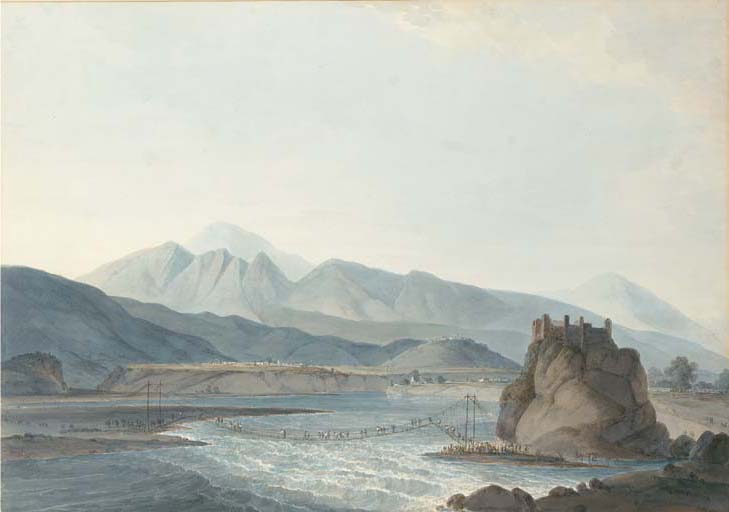

A view by Thomas Daniell of a rope bridge: "an ingenious contrivance, and so simple that it may be soon erected and soon removed" (1789)
Source:
http://www.christies.com/LotFinder/search/LOTDETAIL.ASP?sid=&intObjectID=4572567&SE=CMWCAT03+100380+%2D1670814700+&QR=M+1+0+Aqc0000900+87711++Aqc0000900+&entry=india&SU=1&SN=7074&RQ=True&AN=1
(downloaded Sept. 2005)
"Thomas Daniell, R.A. (1749-1840). The Rope Bridge, Srinagar, Garhwal, Uttaranchal, inscribed 'THE ROPE BRIDGE AT SIRINAGUR, OVER THE ALUCNINDRA, THE PRINCIPAL BRANCH OF THE RIVER GANGES' and further inscribed and dated 'Taken at the time of the evacuation of the/City in consequence of the approach of/a large Army from Almorah. in the/Year 1789-' (both on the artist's original mount); pencil, pen and brown ink and watercolour, watermark 'J WHATMAN', on the artist's black-line mount; 21¼ x 29½ in. (54 x 74.9 cm.). London, Spink, Adventurers in Eighteenth Century India: Thomas and William Daniell, 12-29 November 1974, no. 21. Engraved T. and W. Daniell, aquatint engraving, January 1805, for Oriental Scenery, vol. IV, no. 23. This watercolour was begun on 28 April 1789, as the city of Srinagar was being attacked by the Kumaon forces.
In Oriental Scenery, (loc. cit.), they continue, 'The river here
is
too rapid to be passed, even by boats and therefore the bridge of
ropes,
represented in this plate, offered the only means for the Rajah
and his
people to effect their retreat, which circumstances presented an
affecting
scene... This bridge, which is 240 feet in length, is an ingenious
contrivance,
and so simple that it may be soon erected and soon removed. On
each
side
of the river two strong and lofty poles are fixed in the ground,
and
kept
together with transverse pieces from side to side. From the bottom
of
these
upright poles are carried other ropes, which are drawn towards the
upper
ones by a lacing of cords, while flat pieces of bamboo are so
fastened
to the lower cords from a tolerably commodious footway. On the top
of
the
rock near the bridge are the remains of a building formerly
inhabited
by
a Faquier, who is a kind of Indian hermit'.
*'Rope bridge at Tiri (Teree)' [Garhwal], from Meyer's Universum, 1835*
Source: ebay, Feb. 2006
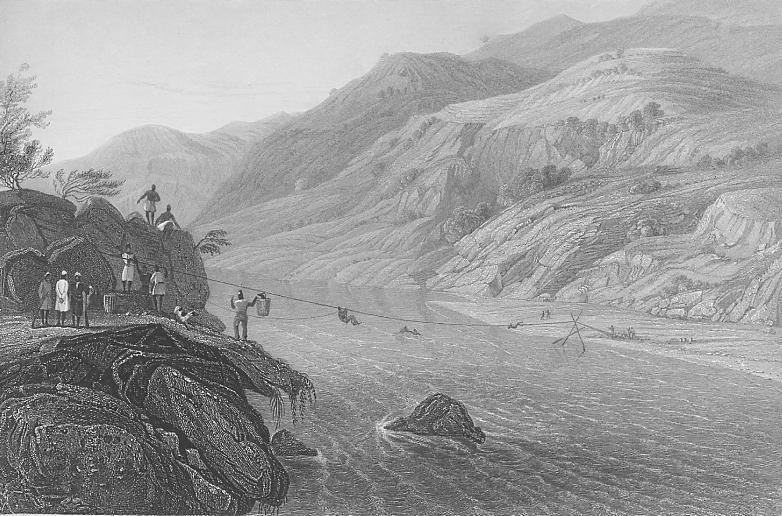
A "jhula," or "swing," shown in a steel engraving from 1838
Source: ebay, Aug. 2005
"Steel engraving from 1838: 'Crossing the River Tonse by a Jhoola, India'. Artist: B. Purser; Engraver: Jorden. Published by Fisher, Son & Co., London & Paris.
From the original description:
The natives of this part of India perform the operation of crossing their rivers by means of a jhoola, or rope-bridge; holding on with the hands and feet, and making a loop of their bodies. but, for those unaccustomed to their exercises, there is a wooden slide attached to the rope. On the left bank of the Tonse, which is rather more elevated than the opposite one, a three-stranded rope is attached to a log of wood, secured among the rocks. The rope being stretched across the river, (which is here eighty yards in width) is passed between the prongs of a wooden fork, planted firmly in the ground; and being again divided into three strands, is secured to the trunk of a tree, steadied by a heavy weight. The slide, of hollowed wood, hangs like a movable scale from the rope, having two handles, and a loop to which a thin cord is attached; by means of the latter, the two-handled chair, or slide, is drawn from the lower to the higher bank, the weight of the passenger being sufficient to accomplish the transit in the opposite direction."
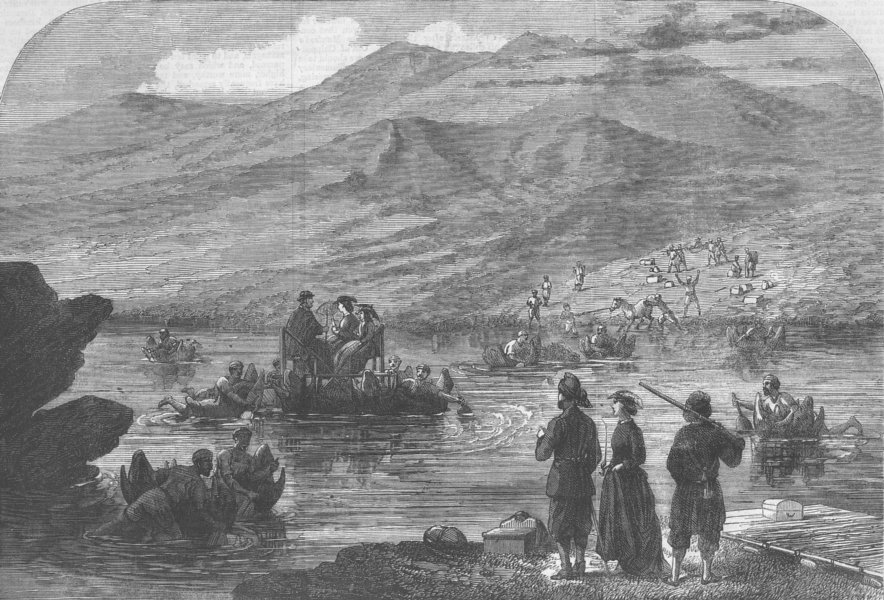
*"Crossing a Nullah," from The Graphic, 1872*
Source: ebay, Jan. 2006
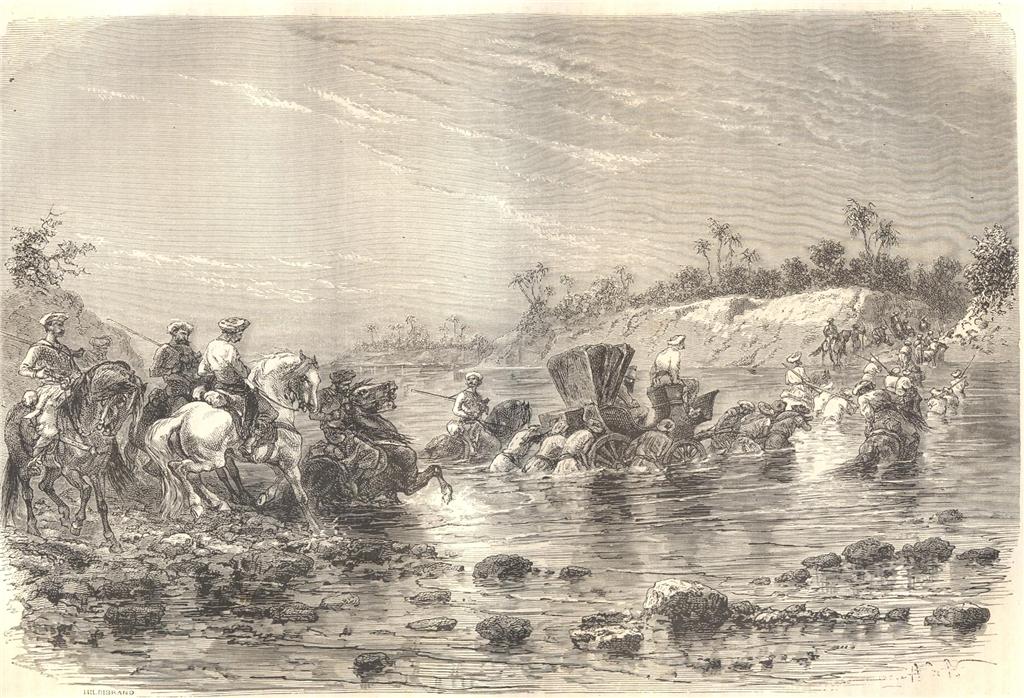
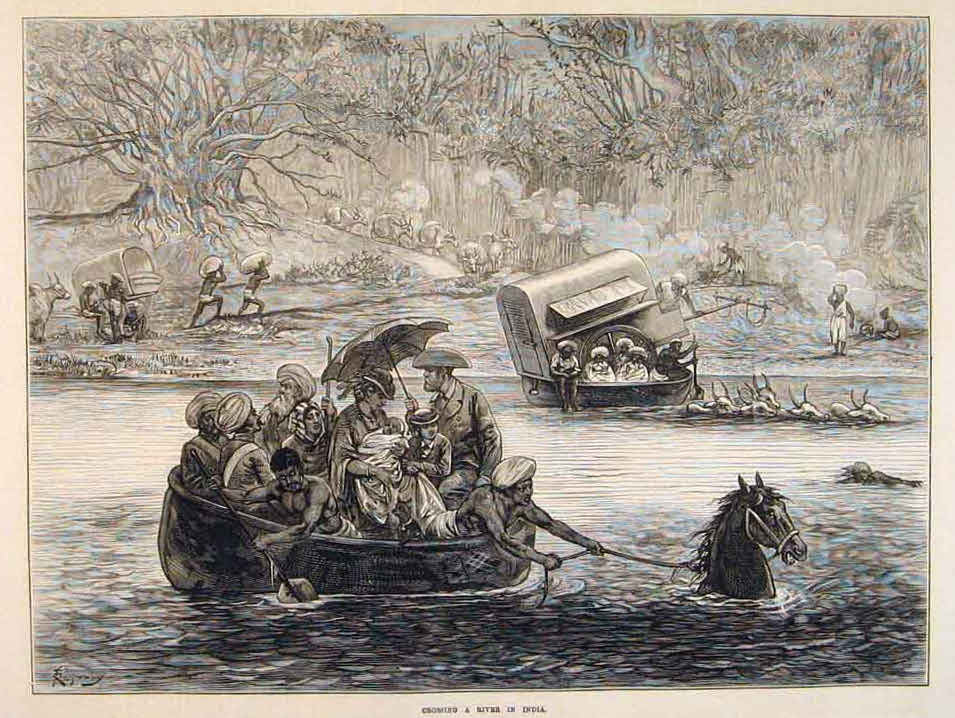
"Crossing a river in India" with horses and cattle; from the Illustrated London News, 1874; *a much larger scan*; and very large scans of the *left half* and the *right half* of the engraving
Source: ebay, Oct. 2005
*"Crossing a Torrent in Bootan," a steel engraving (Selmar Hess, New York, 1877)*
Source: ebay, Apr. 2006
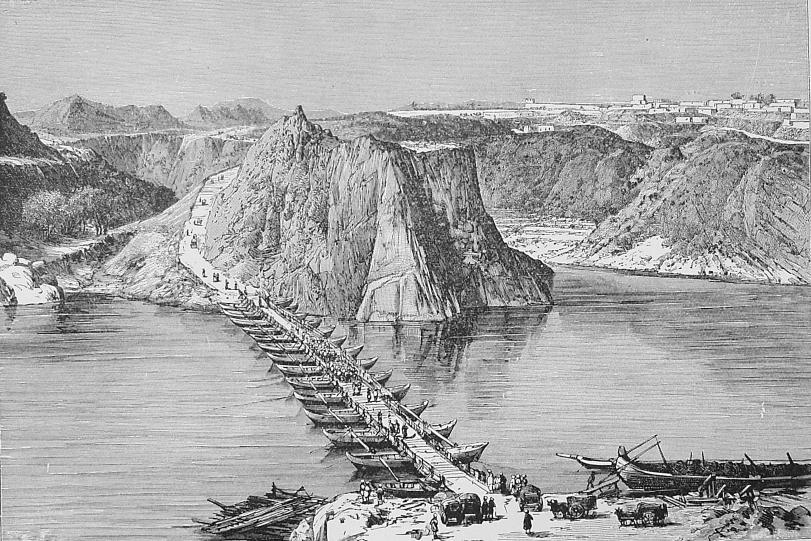
"Bridge of boats over the Indus at Kushalgarh," a wood engraving, 1882; also *"Bridge of boats in the Indus"*, 1878
Source: ebay, Oct. 2005

*"Inflating bullock-skin boats - for crossing the swift Himalayan River Sutlej, N. India," c.1903* (BL)
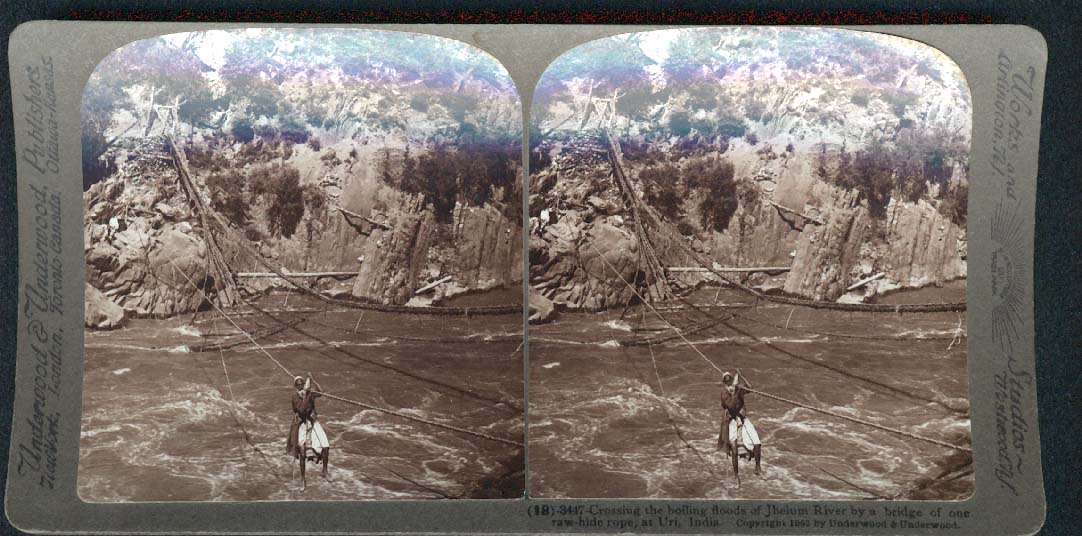
"Crossing the boiling floods of Jhelum River by a bridge of one raw-hide rope, at Uri, India" a stereoscopic view, 1903; *a closer view*
Source: ebay, Jan. 2008
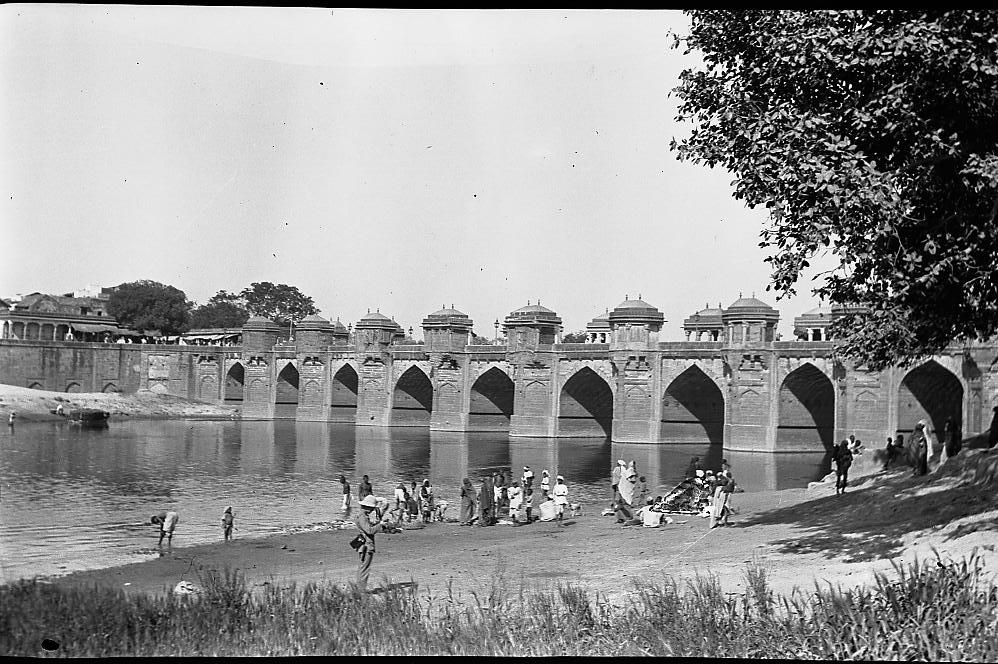
== Indian Routes index == Indian Routes sitemap == Glossary == FWP's main page ==